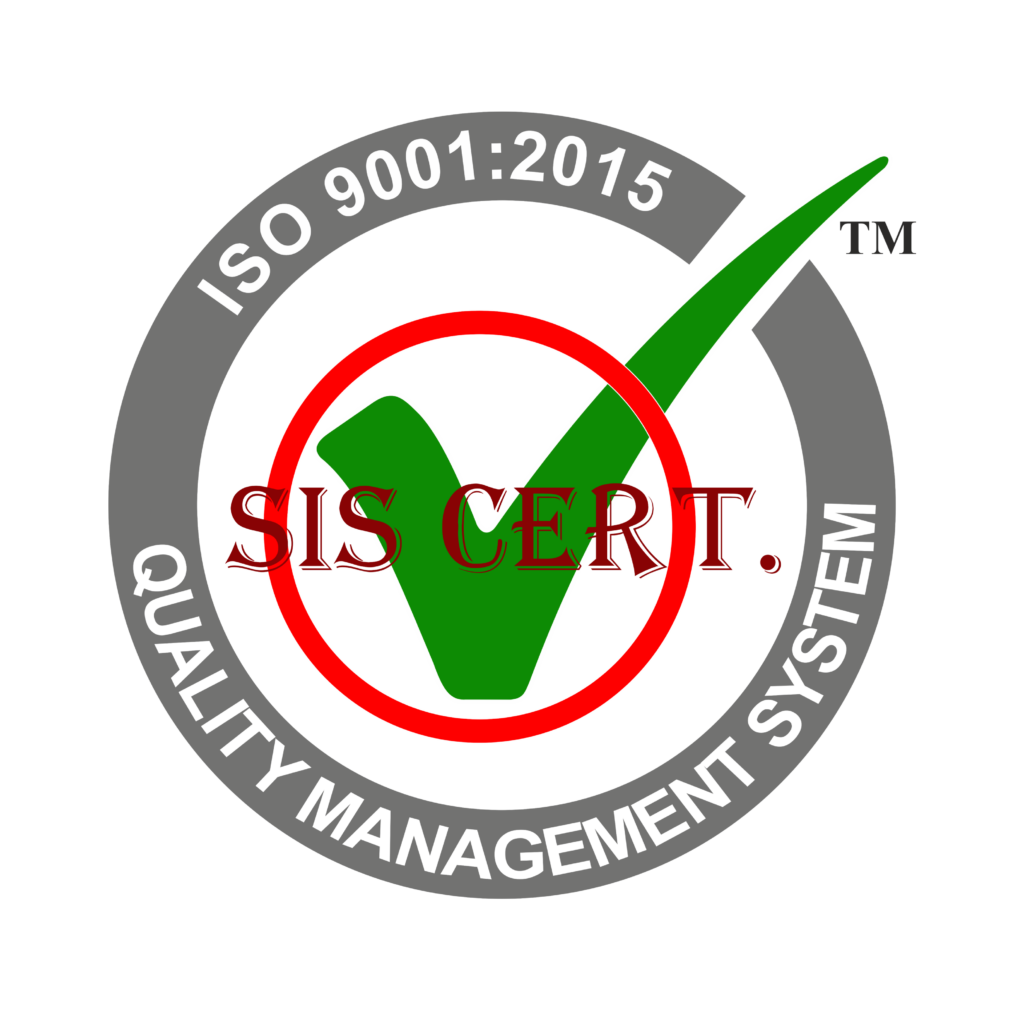As the global demand for stainless steel continues to rise, understanding the trends that influence its production and use is essential for staying ahead in the market.
This article will explore seven key global trends that are currently shaping the stainless steel market:
Price fluctuations: The stainless steel market is highly sensitive to price fluctuations due to factors such as raw material costs, currency exchange rates, and global economic conditions. Understanding and predicting these fluctuations can help companies make informed pricing decisions and manage their profitability.
Manufacturing expansion: Many countries, particularly in Asia, are investing in expanding their stainless steel manufacturing capacities to meet the growing demand. This trend not only increases the global supply of stainless steel but also creates opportunities for collaboration and partnerships in the industry.
Demand patterns: The demand for stainless steel is driven by various sectors, including construction, automotive, energy, and consumer goods. Analyzing the demand patterns within each sector can help companies target their marketing and sales efforts effectively and align their production capacities accordingly.
Supply chain challenges: The stainless steel industry relies on a complex global supply chain, encompassing raw material suppliers, steel mills, distributors, and end-users. Understanding and mitigating supply chain challenges, such as transportation costs, logistics, and lead times, can improve efficiency and reduce costs.
Market consolidation: The stainless steel market is experiencing consolidation, with larger players acquiring smaller companies to strengthen their market position and gain a competitive edge. Companies need to stay informed about these consolidation activities to identify potential partnership or acquisition opportunities.
Regulatory dynamics: Environmental regulations, trade policies, and quality standards can significantly impact the stainless steel market. Keeping track of the evolving regulatory landscape can help companies stay compliant and adapt their operations accordingly.
Technology innovations: Advancements in technology, such as new production techniques, surface finishes, and alloy developments, are driving innovation in the stainless steel industry. Embracing these innovations can provide companies with a competitive advantage and open up new market opportunities.
With these insights, companies can better anticipate and capitalize on market opportunities. By understanding and adapting to these global trends, businesses can position themselves for success in the evolving stainless steel market.
Key Takeaways
- Price fluctuations in the stainless steel market are influenced by factors such as raw material costs, currency exchange rates, and global economic conditions.
- Manufacturing expansion in countries, particularly in Asia, is increasing global supply and creating opportunities for collaboration and partnerships.
- Understanding demand patterns in sectors such as construction, automotive, energy, and consumer goods helps companies target marketing and sales efforts effectively.
- Regulatory dynamics, including trade tariffs and environmental regulations, impact the stainless steel market and drive the need for cost-effective production methods and innovative production processes.
Price Fluctuations
Affected by global market forces, prices of stainless steel have been fluctuating significantly. In order to better understand the context of the global demand trends for stainless steel, it is important to outline the focus of the stainless steel market. By taking into account the changing global market conditions and the international demand for stainless steel, it is possible to gain a better understanding of the pricing fluctuations that have been observed.
As the demand for stainless steel increases, prices tend to rise. On the other hand, when the demand for stainless steel is lower, the prices can drop significantly. Additionally, the prices can also be influenced by factors such as production costs, availability of raw materials, and the cost of production. As a result, it is essential to take into account all of these factors in order to accurately predict the pricing trends of stainless steel in the global market.
Manufacturing Expansion
As global demand for stainless steel continues to increase, manufacturers have been expanding their production capabilities in order to meet the rising demand. This trend is evident in both developed and emerging economies, as the global stainless steel market continues to grow. Companies across the world are investing in new technologies that enable them to produce higher quality products in less time. This is especially true in the manufacturing of stainless steel products, as the industry is constantly striving for greater efficiency and performance.
Manufacturers are also increasing their capacity by adding new production lines and expanding existing facilities. With the help of advanced automation systems, these operations can be completed with minimal human intervention, allowing for faster production and greater accuracy. This helps to reduce costs while improving quality. Additionally, the use of new and improved alloys is allowing for unprecedented levels of strength and corrosion resistance.
These investments in technology and production capacity are enabling manufacturers to meet the increasing global demand for stainless steel. This trend is helping to drive economic development in both developed and emerging economies. The increased availability of stainless steel products is allowing businesses to expand their operations and provide goods and services for a variety of markets. This expanding global demand is ensuring that the stainless steel market will continue to grow in the years to come.
Demand Patterns
The stainless steel market is experiencing significant changes due to global demand patterns. Supply and demand, price volatility, and shifts in the supply chain are all having an effect on the market.
As a result, it is important to understand the underlying demand trends that are influencing the stainless steel market.
Supply & Demand
Given the rising demand for stainless steel worldwide, it is essential to understand the various global trends influencing its supply and demand patterns.
The availability of raw materials, the production and supply of finished products, as well as the prices of the metal are all important considerations for market participants.
Another factor to consider is the impact of international trade policies, tariffs, and regulations on the global stainless steel market.
On the demand side, the growing demand for infrastructure and consumer products is driving the need for stainless steel. Additionally, the proliferation of new technologies and applications has created new opportunities for the metal’s use.
These factors, combined with the high cost of production, make it difficult to predict the future of the global stainless steel market.
As such, it is essential to monitor and analyze these trends in order to make informed decisions.
Price Volatility
Price volatility has been a key factor driving global demand patterns for stainless steel. Market prices are influenced by a mix of macroeconomic, geopolitical, and supply/demand dynamics. In recent years, the stainless steel supply chain has been threatened by trade wars, tariffs, and other restrictions, resulting in price fluctuations.
Given the cyclical nature of the steel market, investors must be aware of the potential for market swings.
Businesses must also ensure they have the capacity to adjust their operations quickly to accommodate market changes. The ability to predict and respond to the impacts of market volatility is essential for success in the stainless steel industry.
Supply Chain Dynamics
Global demand patterns for stainless steel are largely influenced by the dynamics of the supply chain. Manufacturers and distributors of stainless steel products must remain agile and responsive to the constantly shifting trends in the industry. This includes closely monitoring global demand, tracking inventory, and proactively adjusting production accordingly.
The digitalization of the supply chain is creating new opportunities to better understand customer needs and anticipate their wants. By utilizing advanced data analytics, businesses can better understand the needs of their customers and adjust their supply chain actions to meet those needs.
With the right strategies in place, businesses can ensure a steady and reliable flow of stainless steel products to meet the ever-changing global demand.
Supply Chain Challenges
The supply chain infrastructure for the production of stainless steel has become increasingly complex, posing a major challenge for the industry. To ensure that the global demand for stainless steel is met with sufficient supply, stakeholders must work together to create a well-functioning, cost-efficient, and reliable supply chain.
This, however, is easier said than done, as there are multiple challenges that must be addressed to ensure that the supply chain operates smoothly.
First, there is the challenge of locating enough raw materials to produce the required quantity of stainless steel. This is especially difficult for producers in developing countries, as their access to raw materials is often limited. Additionally, procuring the right quality of raw materials is also a challenge, as there are a variety of grades and specifications of stainless steel.
Second, there is also the challenge of ensuring that production costs are kept low. As stainless steel is used in a variety of industries, and as the cost of production can vary widely, many producers must keep costs down in order to remain competitive in the market.
Finally, there is the challenge of managing logistics and distribution. This is especially important for international shipments, as transportation costs can be high. Additionally, ensuring that shipments are delivered on time and in good condition is also key to ensuring the success of the supply chain.
These are just a few of the challenges faced by stakeholders in the stainless steel industry. It will take a concerted effort from all players in the supply chain to ensure that the global demand for stainless steel is met.
Market Consolidation
In recent years, the stainless steel market has seen a trend of consolidation as producers work to consolidate their operations to remain competitive. Industry leaders are looking for ways to optimize their production processes and gain a competitive advantage in a highly competitive global market. As a result, several smaller players have been forced to merge with or acquire other companies in order to remain competitive. This trend has enabled larger companies to take advantage of economies of scale, leading to cost savings and increased profits.
The impact of market consolidation can be seen in the increasing number of strategic partnerships and joint ventures between companies. Additionally, larger companies are investing heavily in new technologies and research and development projects in order to keep up with the changing market dynamics. This is leading to increased collaboration between companies and increased innovation in the stainless steel market.
The consolidation of the stainless steel market has also led to increased competition, as many larger companies are now competing for the same market share. As a result, prices have seen a steep decline in recent years, which has led to increased profit margins for the larger players. In addition, the consolidation of the stainless steel market has opened up opportunities for companies to enter new markets and expand their global reach.
Regulatory Dynamics
The regulatory dynamics of the stainless steel market have far-reaching implications on the global demand for stainless steel.
In particular, the imposition of trade tariffs and stringent environmental regulations have had a significant impact on the way in which the industry operates and produces.
As such, it is important to understand the various regulations affecting the stainless steel market in order to properly plan for the future.
Trade Tariffs
Significantly impacting the global demand for stainless steel, trade tariffs have been a major regulatory dynamic in the market. These taxes on international imports and exports have had a significant impact on the stainless steel industry, with some countries imposing higher tariffs than others.
As a result, many countries are now looking for more cost-effective production methods in order to remain competitive in the market. The current landscape is pushing companies to become more innovative in their production processes, as well as focus on more efficient distribution networks in order to reduce costs.
Trade tariffs have become a powerful tool for governments to control the flow of goods and services, and this has had a significant impact on the stainless steel market. Companies must now be more strategic in their approach to international trade in order to remain competitive in today’s market.
Environmental Rules
Regulatory dynamics, such as environmental rules, have become increasingly important in the global stainless steel market. Environmental regulations are being implemented across many countries to reduce emissions and promote sustainability. This has led to an increased focus on the production processes of stainless steel, prompting manufacturers to innovate and adopt more efficient production techniques.
Furthermore, environmental regulations are driving investment in research and development for cleaner and more efficient production methods, such as the use of recycled materials. In addition, governments are mandating the use of stainless steel with improved environmental performance for specific applications. As a result, manufacturers are investing in technologies that reduce the environmental footprint of stainless steel production.
These developments are expected to have a significant impact on the future of the global stainless steel market.
Technology Innovations
Exploring the impact of technology on the stainless steel market, advances in production and processing capabilities have contributed to a shift in global demand trends. Automation and robotics are driving the need for improved efficiency and productivity in the steel industry, providing a competitive advantage for steel producers.
Additionally, the advent of 3D printing has opened up new opportunities for manufacturers to create complex parts or components from stainless steel. This technology has enabled the production of unique designs with greater accuracy and precision than ever before.
With the rise of Industry 4.0, manufacturers are also able to access new levels of data-driven analytics that can be used to optimize production and reduce costs. Furthermore, the use of sensors and predictive analytics has enabled the steel industry to better monitor and control the quality of the steel produced.
As a result, stainless steel has become increasingly popular in a variety of industries due to its advantageous properties, such as durability and corrosion-resistance. Technology is, therefore, increasingly becoming a critical factor in the growth of the stainless steel market.
Frequently Asked Questions
What Are the Primary Drivers of Global Demand for Stainless Steel?
The primary drivers of global demand for stainless steel are increased industrialization, rising infrastructure and consumer goods sectors, and growing demand for green energy solutions.
What Are the Primary Factors Influencing Prices of Stainless Steel?
The primary factors influencing prices of stainless steel are supply and demand, economic conditions, cost of production, and foreign exchange rates. Global demand for stainless steel is also a major factor.
What New Technologies Are Driving the Production and Use of Stainless Steel?
New technologies such as additive manufacturing, advanced corrosion-resistant alloys, and automated welding are transforming the stainless steel industry. These innovations are enabling faster, more efficient production and use of stainless steel.
How Have Changes in the Supply Chain Impacted the Stainless Steel Market?
The stainless steel market has seen changes in the supply chain due to advances in production technology and increased global competition. Such changes have led to greater efficiency and cost savings, enabling businesses to innovate and meet the demand for stainless steel.
What Impact Have Regulations Had on the Production and Use of Stainless Steel?
Regulations have had a considerable impact on the production and use of stainless steel, resulting in stricter standards and a need for more efficient production processes. This drives innovation within the industry, helping to ensure a sustainable future.
Conclusion
The stainless steel market is subject to many global trends and influences. These include price fluctuations, manufacturing expansion, demand patterns, supply chain challenges, market consolidation, regulatory dynamics, and technology innovations.
These key trends drive the stainless steel market, and it is likely that these trends will continue to shape the industry in the coming years. In order to remain competitive, manufacturers must stay abreast of the latest developments in the market and adjust their business strategies accordingly.


